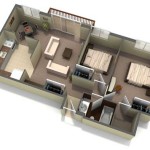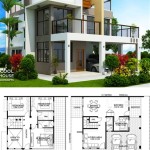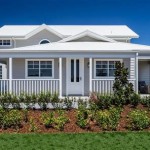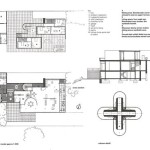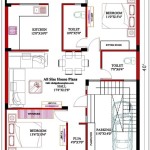Small Passive Solar Home Plans: Harnessing the Sun's Energy
Passive solar home design is a construction approach that leverages the sun's energy for heating and cooling, reducing reliance on mechanical systems. Small passive solar home plans are particularly appealing for those seeking energy efficiency and sustainability in a compact living space. These designs strategically integrate building orientation, window placement, insulation, and thermal mass to create a comfortable and energy-saving environment.
The core principle behind passive solar design is optimizing the building's interaction with sunlight. During the winter months, the design aims to capture and store solar heat, while in the summer, it focuses on minimizing solar heat gain and promoting natural ventilation. A well-executed small passive solar home plan can significantly lower energy bills and reduce the home's carbon footprint.
Several factors influence the effectiveness of a passive solar home. Climate plays a crucial role, dictating the specific strategies that will be most beneficial. Building materials, window types, and landscaping also contribute to the overall performance. Careful planning and consideration of these elements are essential for achieving optimal energy efficiency.
Optimal Orientation for Solar Gain
One of the most critical aspects of passive solar design is the orientation of the home. In the Northern Hemisphere, a south-facing orientation is generally considered ideal for maximizing solar gain during the winter months. This allows for the most direct sunlight to enter the home through south-facing windows.
A large expanse of south-facing windows is a key component of many passive solar designs. These windows act as solar collectors, allowing sunlight to penetrate the interior and warm the thermal mass. The size and placement of these windows should be carefully calculated to balance heat gain with potential heat loss during colder periods.
East- and west-facing windows can contribute to overheating during the summer months. Therefore, it's important to minimize their size or incorporate shading strategies to reduce solar heat gain. Overhangs, awnings, and strategically planted trees can effectively block direct sunlight during the hottest parts of the day.
The specific orientation should be adjusted based on the local climate and site conditions. For example, in areas with severe winters, a slightly east-of-south orientation may be preferable to capture morning sunlight and warm the home more quickly. In regions with mild winters, a more southerly orientation may suffice.
Consideration should also be given to the surrounding landscape. Obstructions such as trees or neighboring buildings can significantly reduce the amount of sunlight reaching the home. A thorough site analysis is necessary to determine the optimal orientation for maximizing solar gain.
Utilizing Thermal Mass for Heat Storage
Thermal mass refers to materials that can absorb, store, and release heat. In passive solar design, thermal mass plays a crucial role in regulating temperature fluctuations and maintaining a comfortable indoor environment. Common materials used for thermal mass include concrete, brick, stone, and water.
During the day, sunlight entering through south-facing windows warms the thermal mass. The thermal mass absorbs this heat and stores it, preventing the indoor temperature from rising too rapidly. As the sun sets and the outdoor temperature drops, the thermal mass gradually releases the stored heat, helping to maintain a consistent temperature throughout the night.
The placement of thermal mass within the home is critical. It should be located in areas where it will receive direct sunlight during the day. For example, a concrete floor or a brick wall positioned near south-facing windows can effectively absorb and store solar heat.
The amount of thermal mass required depends on the climate and the size of the home. In colder climates, a larger amount of thermal mass is needed to store sufficient heat to offset nighttime temperature drops. In warmer climates, a smaller amount of thermal mass may be sufficient to regulate temperature fluctuations.
The color of the thermal mass also affects its performance. Darker colors absorb more heat than lighter colors. Therefore, dark-colored materials are often used for thermal mass in passive solar homes.
Consideration must be given to the location of insulation relative to the thermal mass. Ideally, the thermal mass should be located inside the insulated envelope of the home. This prevents heat from escaping to the outside and ensures that the stored heat is used to warm the interior.
Optimizing Insulation and Natural Ventilation
Effective insulation is essential for minimizing heat loss in the winter and heat gain in the summer. A well-insulated home requires less energy for heating and cooling, reducing reliance on mechanical systems. High levels of insulation in the walls, roof, and floor are crucial for maintaining a comfortable indoor temperature.
The type of insulation used also affects its performance. Materials such as fiberglass, cellulose, and spray foam offer varying levels of insulation value. The choice of insulation material should be based on the climate, budget, and environmental considerations.
Air sealing is another important aspect of insulation. Air leaks can allow heat to escape in the winter and enter in the summer, reducing the effectiveness of the insulation. Sealing cracks and gaps around windows, doors, and other openings can significantly improve the energy efficiency of the home.
Natural ventilation is a passive cooling strategy that utilizes natural airflow to remove heat from the home. Opening windows and doors on opposite sides of the home creates a cross breeze that can help to cool the interior. The effectiveness of natural ventilation depends on the prevailing winds and the design of the home.
Operable windows are essential for natural ventilation. Windows should be positioned to take advantage of prevailing winds. For example, windows placed on the windward side of the home will allow air to enter, while windows placed on the leeward side will allow air to exit.
Ventilation strategies can also include the use of clerestory windows, which are high windows that allow hot air to escape from the upper levels of the home. Solar chimneys can also be used to create a natural draft that draws hot air out of the home.
In addition to windows, landscaping can also play a role in natural ventilation. Planting trees and shrubs strategically can help to direct airflow and shade the home, reducing the amount of heat that enters the building.
Passive solar design is not a one-size-fits-all approach. The optimal design will vary depending on the climate, site conditions, and individual preferences. Careful planning and consideration of all these factors are essential for creating a small passive solar home that is both energy-efficient and comfortable.
Integrating these principles into small home plans requires careful consideration of space constraints and budget. Multifunctional spaces, efficient layouts, and cost-effective materials can help to achieve passive solar benefits without sacrificing comfort or affordability. Small changes can yield big results when applied to a thoughtfully designed home.
Ultimately, small passive solar home plans offer a sustainable and cost-effective way to create a comfortable and energy-efficient living space. By harnessing the power of the sun, these designs can significantly reduce energy consumption and contribute to a more sustainable future.

Passive Solar 1600 0060

10 Solar Passive Houses Ideas House Plans

Affordable Passive Solar Planbook Appalachian Energy Center

Passive Solar House Design Ecoliv

Passive Solar House Plan 2 Bedrms Baths 1418 Sq Ft 146 2710

Deltec Homes Renew Collection Ridgeline B 1604sf Passive Solar Layout Vaulted Ceilings High Clere House Plans Prefabricated Houses Dream

Tiny Eco House Plans Off The Grid Sustainable Houses

Solar Adobe House Plan 1870

Passive Design Green Home Technology Center

Passive Solar House Design


